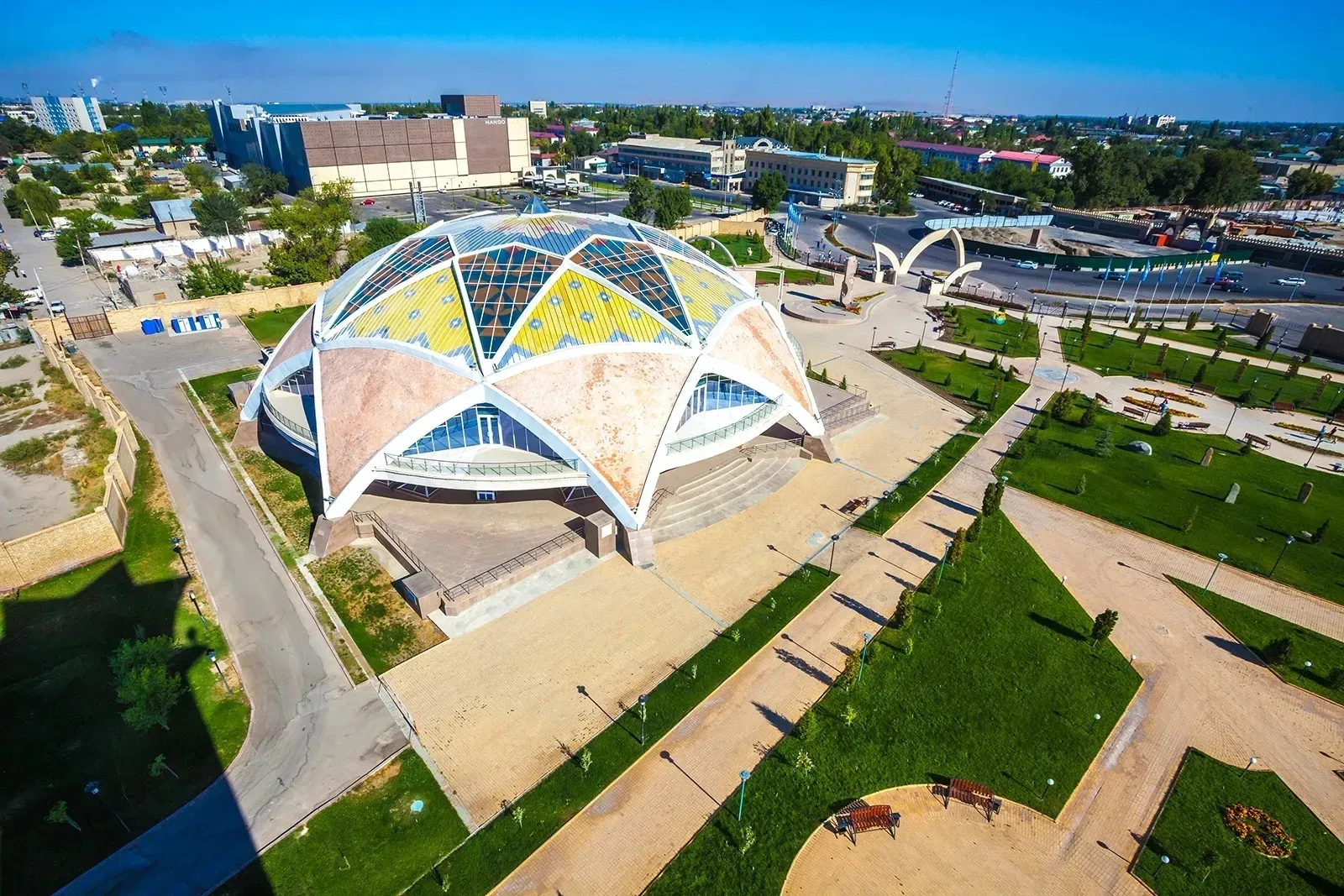Taraz
The first written mention of the city in Greek sources dates back to 400, under the name Tholosa.
Taraz is a fascinating destination for travelers interested in the Silk Road, as the city was one of the largest destinations on the route. Known in ancient times as 'Talas,' its strategic location made it a coveted prize for various empires and dynasties throughout history, leaving behind a wealth of archaeological and architectural wonders. The other name for Taraz was 'the city of merchants'; it served as the capital of the Turgesh and later the Karluks and Karakhanids. This land has preserved the traces of citadels, caravanserais, pise-walled mud huts of commoners, clay fences and courtyards, and craftsmen’s workshops. Today, Taraz boasts a wealth of significant historical and architectural landmarks, including mausoleums, mosques, fortresses, and ancient ruins.
Notable sites include the Aisha Bibi Mausoleum and Babaji Khatun Mausoleum, both designated by UNESCO as World Heritage Sites. These are two of the most enchanting and historically significant sites in the region. The Aisha Bibi Mausoleum is dedicated to Aisha Bibi, believed to have been a noblewoman from the 11th century. According to legend, she was betrothed to a prince but passed away before their marriage. The mausoleum stands as a tribute to her memory. Babaji Khatun, a companion of Aisha Bibi, later became the custodian of the mausoleum and, upon her passing, was buried 20 steps from Aisha Bibi. Both mausoleums are situated near Taraz, drawing many pilgrims seeking blessings for health, happiness, and prosperity.
The two mausoleums are conveniently located near each other, making it easy for visitors to explore both sites in a single trip. The serene surroundings and beautifully preserved structures offer a peaceful and contemplative experience.
Another interesting destination includes Kone Taraz, once a local bazaar, that has been repurposed into an open-air museum with hundreds of archaeological artifacts covering an area of 10 hectares. The complex is a significant cultural heritage site of the country, where tourists can interact with ancient objects and remains from various eras found during excavations. Among the exhibits are centuries-old coins, household items and utensils, petroglyphs, and traces of a mosque, madrassah, and baths discovered on the site.






